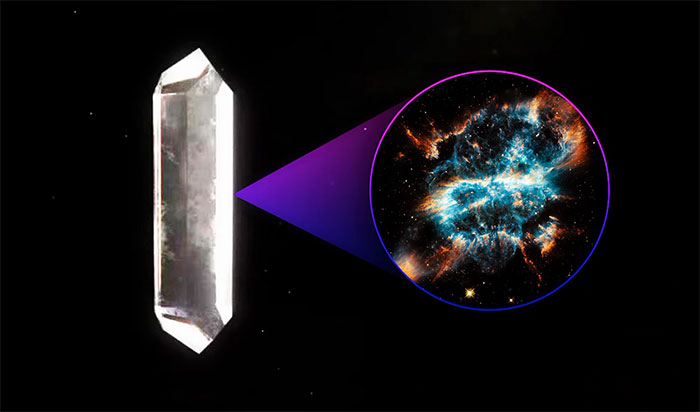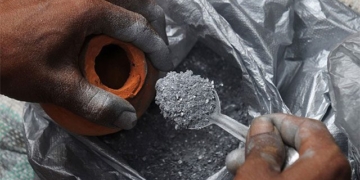This is also one of the driving forces prompting countries to seek to conquer the Moon again.
China’s Chang’e 5 mission has recently brought back a new type of mineral from the Moon’s surface. This mineral has been named “Changesite-(Y)” by Chinese scientists and is described as “a type of colorless transparent cylindrical crystal.” Additionally, Chinese scientists claim that this new mineral contains Helium-3, an isotope of Helium that scientists promote as a potential fuel for future nuclear fusion reactors.
This new crystalline mineral is extremely tiny, measuring only 1/10 the size of a human hair. Nevertheless, it has garnered significant interest from lunar geologists, as the Helium-3 it contains has the potential to change the world.
Since the Apollo program, scientists have known that the Moon’s surface contains Helium-3 in a deposited form. Compared to the isotopes Tritium and Deuterium, the main advantage of Helium-3 is that its fusion reactions do not produce radioactive neutrons, making it safer. However, the main drawback of Helium-3 is that fusion reactions using this isotope are much more difficult to control than those using other isotopes.

This clean fusion energy source could change the world in unprecedented ways.
While this isotope is abundant on the Moon, it is extremely rare on Earth. This is because our planet is protected by a magnetic field that shields it from solar wind bursts—the primary source that creates this isotope. In contrast, the Moon lacks this protective layer and has endured solar wind for hundreds of millions of years.
According to scientists, if Helium-3 can be extracted from the Moon for use in nuclear fusion power plants, this energy source could provide humanity with “thousands, even tens of thousands of years of energy.”
Of course, operating fusion technology using Helium-3 remains a challenging issue. Helium-3 fusion may not become a reality before this century due to technical obstacles. Some changes in U.S. energy and space policy could further accelerate the deployment of Helium-3 fusion energy.
There are many reasons driving powers to return to the Moon: scientific research, commerce, and opportunities to demonstrate soft power. However, China’s return of Helium-3 to Earth highlights another reason the race to conquer the Moon is being reignited. This abundant and clean fusion energy source could change the world in unprecedented ways.
That is why, according to NASA, China is preparing the next phase of its lunar exploration program aimed at establishing “a research base” at the Moon’s South Pole. In addition to building a research facility in this area, China’s future Chang’e 6, 7, and 8 missions also aim to collect rock samples, search for water sources, and test construction technologies for bases in this region.
It is likely that China is collaborating with Russia to plan for astronauts to land on the Moon in the coming 2030s.
Meanwhile, NASA has had to postpone the launch of the Artemis 1 mission twice. If everything goes as planned, the powerful Space Launch System rocket will lift off on September 27, with October 2 as a backup launch date. Upon launch, this mission will send the Orion spacecraft, filled with instruments and other cargo, on a journey around the Moon before landing in the Pacific Ocean off the coast of California.
Two other robotic space missions, including Intuitive Machines and Astrobotic, are still scheduled to launch later this year or early next year.
If successful, they will land probes on the Moon’s surface, demonstrating the effectiveness of the Commercial Lunar Payload Systems (CLPS) program—NASA’s initiative in collaboration with private companies to seriously explore the Moon. Although this program faced threats when one of the participants, Masten Space Systems, went bankrupt, many other CLPS missions will be launched in the future.


















































